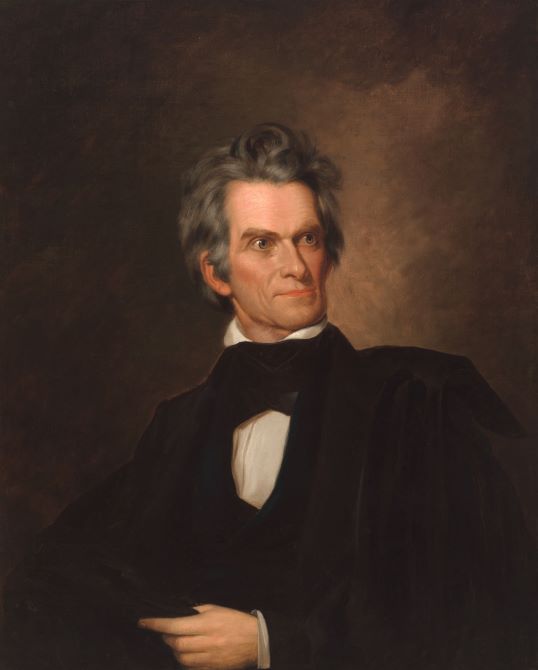Liberty Matters
Prioritizing the Practical

Three themes strike me as I read all of the contributions to this enjoyable discussion. I touched on the first one in my previous contribution, but I have been spurred on by all three subsequent essays to think more about it. That first theme is how we approach Calhoun as a political thinker. My approach has always been to start with the Disquisition, which he presented as the culmination of his life’s intellectual endeavors, and then look to his various writings and speeches to help elucidate the ideas found there, find examples, and discern how he arrived at his conclusions. Most, however, prioritize the practical, sometimes finding the Disquisition and the other more theoretical writings to be a grandiose cover for ulterior motives. I gather we four fall along a spectrum on this point with myself at one end, Whittington and Read in the middle, and Cost at the other end.
I don’t claim to have any definitive proof that my approach is right (though, of course, I think there are good reasons for it). Here, I will merely note its importance to the second theme: the question of practicality. Cost says, for instance, that “the idea of the concurrent majority is simply unworkable” because state nullification would result in a paralyzed federal government. Even if he’s right about nullification, “the idea of the concurrent majority” is much broader than simple state nullification. Calhoun noted in several writings that all concurrent institutions must be “made to fit” the society and circumstances. If it wasn’t possible for every social interest to hold a veto without paralysis, then the best government would be the one that “ma[de] the nearest approach to it, by requiring the concurrence . . . of the greatest possible number consistent with the great ends for which Government was instituted.”[1] Looking only at the specific political issues of the 1830s fails to capture the broader principle or the extent to which that principle was to be adapted to practical necessity.
The third theme is republicanism. Read highlighted an important point when discussing sectional differences and how they were to be worked out: “Calhoun did not believe such deep divisions could be bridged at the popular level. He did, however, believe they could be overcome by negotiation and compromise among the elected leaders of each section—but only with the right kind of decision process.” I think this is relevant to Cost’s general view that Calhoun was markedly less republican than Madison. He was certainly no democrat, but he did place great value on a process through which the public could, through proper institutions, deliberate and compromise to arrive at the common good.
Nullification, as he conceived it, was one such institution. It was to be used sparingly, no doubt, but it was not extraneous to the normal process of politics. He described it as an “intermediate point” between abject submission and forceful resistance “by which the Government may be brought to a pause, and thereby an interval obtained to compromise differences, or, if impracticable, be compelled to submit the question to a constitutional adjustment, through an appeal to the States themselves . . . ”[2]
By contrast, Cost treats nullification as a kind of full stop that puts an end to normal political negotiation. For instance, he cites the Calhoun-Clay compromise as an example of normal “Madisonian” politics, in contrast to nullification. But the Calhoun-Clay compromise tariff was precisely the result of South Carolina’s nullification, as Whittington alludes to in his reply. After the nullification ordinance had passed, as Jackson started raising troops and fire-eaters prepared to secede, Calhoun went to the bargaining table the way he always said the nullification process should proceed: Controversy, nullification, compromise, resolution. It was this political compromise, not Jackson’s Force Bill, that ended the episode.
A sincere thanks to the OLL staff for organizing this discussion and to the three other participants, especially Keith Whittington for setting up the issues so well for us. Even those points on which I disagree prompted much fruitful reflection on my part.
Endnotes
[1] “Speech on the Veto Bill,” in Union and Liberty, 495.
[2] “Fort Hill Address,” in Union and Liberty, 384.
Copyright and Fair Use Statement
“Liberty Matters” is the copyright of Liberty Fund, Inc. This material is put on line to further the educational goals of Liberty Fund, Inc. These essays and responses may be quoted and otherwise used under “fair use” provisions for educational and academic purposes. To reprint these essays in course booklets requires the prior permission of Liberty Fund, Inc. Please contact oll@libertyfund.org if you have any questions.